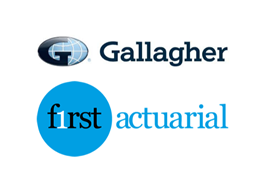Heavy lifting is still required to get the pensions dashboard up and running.
Both consultation periods ended on 16 February, but it was apparent even before the deadline that neither the Financial Conduct Authority’s regulatory framework consultation, nor the Pensions Dashboards Programme’s design standards consultation were going to satisfy the industry that sufficient progress had been made for a programme whose implementation officially starts in less than six months.
In responding to the consultation, Girish Menezes, head of pensions administration at Isio, said the consultations were welcome, but that a lack of clarity will make it difficult for companies across the industry to adequately prepare.
“Time is tight for third-party administrators, who must make a vital decision about how they connect with the dashboard ecosystem, either directly or via an ISP (integrated service provider),” Menezes said.
Some pension administrators will connect to the dashboard ecosystem as early as Q4 this year, though most will be early in 2024, said Menezes. Many will connect via an ISP to deal with the large number of queries predicted, but there has been very little visibility of the dashboard user’s journey, which means they will be forced to make critical decisions without the necessary information.
“For administrators, the decision on which ISP to connect with constitutes the beginning of a long-term partnership and significant investment,” said Menezes.
“Firms won’t want to make this decision without regulatory certainty around how dashboards will operate, and therefore what kind of experience they will be required to deliver for pension scheme members. Further, they will have little or no time for adequate testing.
“With the dashboard going live later this year it is vital that the pensions industry has regulatory certainty as quickly as possible. Administrators need adequate time to onboard, test and learn with the fundamental systems that will underly the dashboard project. This will be critical to ensuring that they deliver something truly innovative and ultimately valuable to scheme members.”
It’ll be alright on the night…
The matter of testing was a primary concern for the Pensions Administration Standards Association.
It highlighted that the 2019 Department for Work and Pensions command paper on dashboards policy showed PDP had failed to follow through on a commitment it had made for PDP to seek to work collaboratively with “interested organisations to create and test dashboards” with schemes “supplying [test] data on a voluntary basis to inform delivery”.
Pasa was supportive of this approach: “Putting these tested dashboards in the public domain early would have allowed schemes and administrators to understand and comment with confidence on all subsequent dashboards proposals,” the consultation response said.
This would provide better understanding of how dashboard journeys would work across the full range of pension data that exists across the many schemes.
“As far as we’re aware, this approach hasn’t been followed in practice,” the response continued. “The MaPS MoneyHelper dashboard team has done some wireframe testing of mock dashboard designs. But the detailed outcome of this isn’t in the public domain and so hasn’t been able to inform our responses to these consultations.
“The lack of test or mock dashboards in the public domain means it’s near impossible for the industry to comment with certainty on dashboards’ design proposals.”
Delays have major regulatory consequences
As it is not possible to begin testing, the accreditation to become a qualifying pension dashboard service (QPDS) will also be delayed, said the Pasa response.
“Furthermore, because of the way the regulatory framework has developed, the first QPDSs won’t be authorised by FCA, and connected to the PDP central digital architecture (CDA) to begin the all-important end-to-end testing with real pensions data, until at least Christmas 2023 (assuming the FCA authorisation gateway opens in ‘summer’ and the authorisation process takes approximately six months).”
Currently, only the MaPS MoneyHelper dashboard is connected to the CDA, but there is no transparency about what is being tested on it, said PASA. Given that the MoneyHelper will not be a QPDS, its testing is somewhat irrelevant to the QPDS process.
Pasa also highlighted the principle, rather than prescription-based approach PDP has taken to support the PDP’s objectives, which it said failed to recognise the amount of configuration work required by schemes.
“Particularly in relation to making DB schemes data available and the potential challenges this may present to administrators and their ability to assess risk from a user perspective in the way data is presented,” it said. “We’re reliant on the FCA approving a QPDS to assess the risk for trustees and providers.”
It’s all in hand…
The impact of a lack of testing will be aggravated by the PDP recently postponing the beta testing of the CDA. In an email it recently sent to all participants, it apologised for the lack of clarity around its “replan”, saying it was “working hard to agree a revised plan that we can all have confidence in delivering”.
“We understand that this uncertainty is having an impact on your own business planning,” the email continued. “We can tell you that we will not be inviting participants to connect before the start of April 2023.”
Some PDP early adopters were supposed to have been onboarded by April, but this postponement will have knock-on effects that some in the industry say will simply be addressed by pushing back the implementation dates for different sets of schemes.
A Pensions Dashboards Programme spokesperson told PensionsExpert:“Delivering dashboards is a complex undertaking – the biggest challenge of the technical build is complete, and we are now focused on pension providers and schemes preparing for dashboards.
“We are clear that dashboards will happen, and we’ve seen overwhelming support from the pensions industry so far, who we continue to work closely with.”
Potential for consumer harm
The criticisms did not end there. Paul Armitage, partner and head of The National Pensions Trust, had a number of concerns about the FCA’s regulatory framework, but in particular around consumer choice and the potential to “create a two-tier system, distort competition, with the potential for consumer harm”.
In a letter to the FCA, Armitage said: “Our key concern with the approach proposed in the consultation is that it risks creating a two tier system between FCA regulated firms operating a PDS (pension dashboard service) and the occupational pensions sector regulated by TPR.”
While Armitage acknowledged the value in FCA authorisation for PDSs, he has concerns about the limitations on exporting data.
The framework only allows data to be exported from the PDS to the individual, or a regulated entity that also offers a PDS as part of the same group.
Many pension savers have a strong connection with their occupational pension scheme and use tools, calculators and financial wellbeing services supplied by their pension scheme to help them plan.
“Not allowing members to export data into these tools and calculators risks undermining what we are trying to achieve in helping our savers and, in our view, is a missed opportunity in the construct of the dashboard regulatory environment.”
Armitage offers a suggestion that exports only be allowed to schemes that have an agreement to provide a PDS through a third party that is also authorised by the Pensions Regulator (such as mastertrusts, superfunds and CDC schemes), and where the member has consented.






















